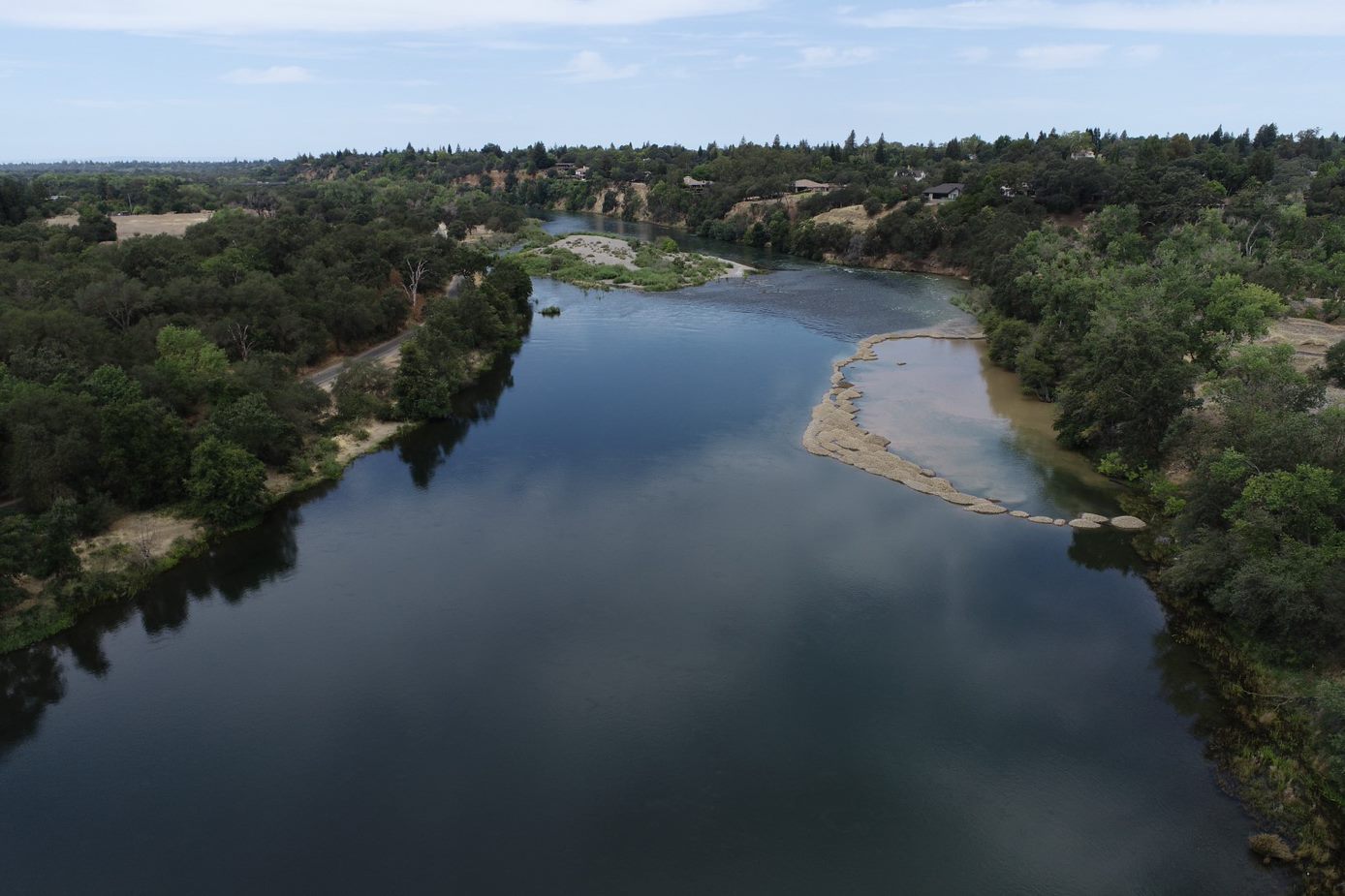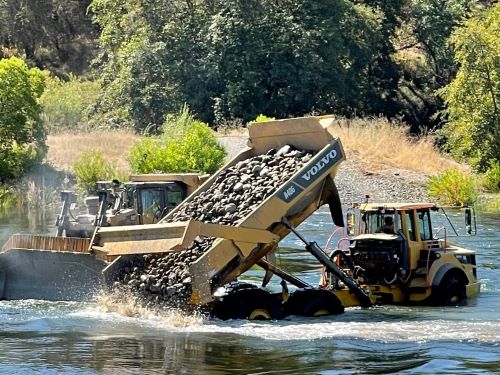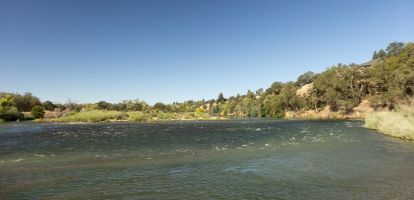Supported By Reclamation Funding, Crews Are Transforming a River Channel
 An elevated view of Lower Sailor Bar (Water Forum photo)
An elevated view of Lower Sailor Bar (Water Forum photo)
Each weekday, big, yellow dump trucks loaded with tons of gravel lumber into the brisk, swift-moving waters at Sailor Bar on the Lower American River downstream from Nimbus Dam. The rocks are upended into river with a splash where a bulldozer then manicures them into the river channel.
The aim is at once complex and amazingly simple: create spawning and rearing habitat for the Chinook salmon and steelhead to access as they return from their long sojourn in the Pacific Ocean.
Supported by Reclamation funding, the Sailor Bar Project is an ambitious, concentrated endeavor taking place on a river that flows through suburban Sacramento County and which attracts multitudes of hikers, cyclists and rafters. The month-long project is implemented via the Water Forum, a consortium of public agencies, business groups and non-governmental organizations.

Thirty years ago, the Central Valley Project Improvement Act launched a process of habitat restoration projects aimed at boosting populations of threatened and endangered fish such as Chinook salmon and steelhead. That process includes several locations on the Sacramento and American rivers where Reclamation and its partnered have invested significant resources in restoring habitat for migrating fish. Clean, carefully sized gravel is displaced in a manner that enables returning fish to build the nests, called redds where females deposit their eggs.
The area around Sailor Bar was heavily mined for gold well into the mid-20th century, and the evidence isn’t hard to see. Huge mounds of displaced river rocks are piled adjacent to the riverbank. The mining degraded fish habitat and later, the construction of Folsom and Nimbus dams restricted access of salmon to their historical spawning grounds upstream. The dams also deprived the river of the regular sediment loads that are necessary for the fish to construct their redds.

In addition to spawning habitat, the project is building rearing habitat that enables juvenile salmon to find refuge before they begin the arduous journey to the ocean. Work also concentrates on creating enough features in the river channel that prevent fish from becoming stranded during low flow conditions.
Projects such as Sailor Bar are important because of the limited existing juvenile rearing habitat to meet the Central Valley Project Improvement Act population goals, said Reclamation fish biologist John Hannon. He added that rearing habitat “is one piece of the lifecycle” for fish that are hindered by cold water availability, degraded migratory conditions and ocean conditions where food is scarce.
“All the pieces are important and providing more and higher quality habitat in the rivers is a part we can improve on and without which, it will be hard to sustain and likely not possible to improve natural populations,” Hannon said.
Erica Bishop, program manager with the Water Forum, said fish are responding to the channel improvements, noting that one site saw a 1,000% increase in redds.
“We have more than a decade of monitoring showing the effectiveness of our spawning habitat, also at other sites along the Lower American River,” she said. “We are still building a dataset for our rearing habitat though, since we only recently began implementing a rearing component on the projects.”

